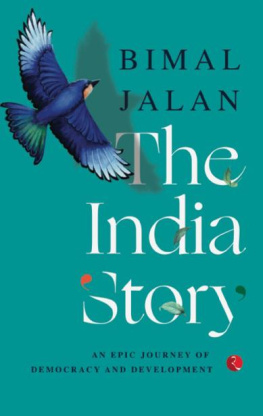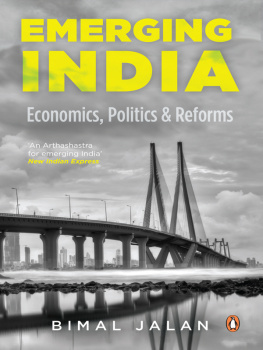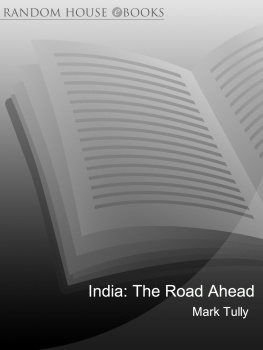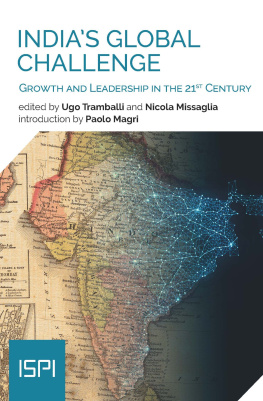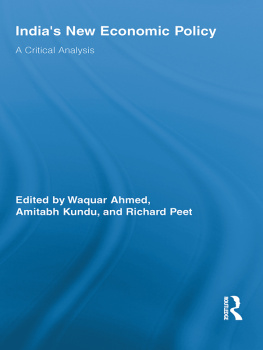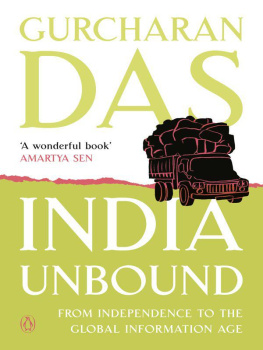Table of Contents


Contents
I NDIA AFTER LIBERALISATION IS a sequel to Resurgent India: Politics, Economics and Governance, published in 2019. It is a collection of selected papers and lectures over three decades, 19912019, which provide an overview of Indias past and future. There were two basic objectives in selecting the articles for publication. First, that the articles should be of contemporary interest, and second, that they should also provide some important policy suggestions, which are compatible with what was suggested in Resurgent India. In Indias post-Independence political history, one of the most important issues which has adversely affected the working of Indias democracy and which still needs to be resolved relates to the separation of powers among the three organs of the State: the legislature, the judiciary and the executive. This issue is of particular interest to citizens and political leaders who want to ensure that the tussle between or encroachment of either the legislature or the executive in the domain of the judiciary is avoided, irrespective of which party or coalitions of parties are in power.
Resurgent India, as well as the present book, could not have been written without the support of the HarperCollins editorial team and Anita Sharma, manager, contracts. As earlier, the editors were always available for informal meetings to collaborate on the contents of the book and to give advice on the policy issues that were relevant in the past and present, and which could be covered in this book. I am also grateful to Satish Choudhary for his meticulous work in preparing the manuscript for publication, and to K.D. Sharma for his organisational and other help.
T HE ARTICLES IN THIS book, covering the period 19912019, are divided into three sections in chronological order. The chapters are based on thirteen selected articles, which have some overlapping themes, depending on the subject being discussed. For example, Section 1, Chapter 3 Finance and Development: Which Way Now? deals with some issues that are also highlighted in the next chapter on Exchange Rate Management: Floating Without Sinking as well as in Section 2, Chapter 5: Indian Banking and Finance: Managing New Challenges. On the whole, however, the primary focus of issues discussed in different chapters is self-contained, and in line with the chapter title.
The first chapter in Section 1 is Controls, Regulations and the State. As is well known, before the liberalisation of the economy in 1991, the role of the corporate sector was essentially limited and allocation of all public resources, including savings and investments, were decided by central planning authorities. This situation changed sharply in the 1990s when all the developing countries were moving towards a more market-determined strategy. In India, as indeed in several other developing countries with large public sectors and overextended governments, the State became financially weak. Therefore, the government had relatively low resources for investment in capital formation or programmes for the poor. Politically also, there were signs of a decline in the so-called authority of the State. There was deterioration in the law-and-order situation in several parts of the country, as well as a decline in the quality of public services, and inordinate delays and cost overruns in public projects. Added to all this was the growing evidence of widespread bureaucratic and political corruption.
In light of the above unwarranted and unsavoury developments, in Chapter 1 it is suggested that the prevailing system of controls and regulations for State control of economic activity devised in India during the colonial period must be abandoned wholesale. It must be replaced with an altogether new system of public surveillance of private economic activity by individuals, associations and corporations. Private activity must, of course, work effectively within the structure of the norms and legal institutions designed and operated by the government. It is also necessary to redefine the relative roles of the Central and state governments in the economy. The main role of the Centre should be the management of macroeconomic policy and enforcement of legal framework for economic activities. The implementation of approved economic programmes should, however, be the responsibility of state governments.
The next chapter is on Indias Comparative Advantage in the Twenty-first Century. This chapter, written in 1997, highlights the comparative advantage that India has in terms of factors of production, i.e., capital, technology, land and labour. Globally, Indias reputation as the worlds largest democracy, with free and fair elections every five years (or more frequently, if required) as well as one of the fastest-growing developing economies in the twenty-first century has been highly appreciated. In the 1990s, there were few developing countries which were as well placed as India to take advantage of the phenomenal changes that occurred in production technologies, international trade, capital movement and deployment of skilled manpower. India acquired, by doing, the knowledge and skills to build any project, manage any firm and contribute to the processing and production of a wide variety of industrial and consumer products.
To achieve its full economic potential and sustain its high rate of growth over time, it is of utmost importance that in the future, India continues to improve its overall policy framework and enhance the efficiency with which available capital and public resources are used. In respect of human resources, while India has the advantage of a large network of institutions of technology and higher education, over time, there has been a significant decline in standards of training and education. A lot, therefore, still remains to be done before India is in a position to exploit the opportunities to realise its full potential.
Chapter 3, Finance and Development: Which Way Now? was written in the context of the East Asian crisis of 1997 and subsequent developments in certain other countries, such as Russia and Brazil. The events in East Asia highlighted the two-way interaction between the financial sector and development, and the need for an appropriate policy framework. In this context, improving the efficiency of the financial sector through market-based reforms is of utmost importance in order to accelerate the growth rate as well as ensure financial stability in a developing country. A related issue is that of striking an appropriate balance between financial regulation and market freedom. While market freedom is essential to foster efficiency, it also raises an equally important question of an appropriate regulatory framework in view of the wide divergence between private and social interests in ensuring the stability of the financial system. Hence, a proper system of regulation relating to prudent risk limits and short-term borrowings has critical importance in minimising risks to the stability of the financial system.
While India must remain steadfast in the pursuit of financial sector reforms, it is also essential to ensure that the success of the process is not viewed from the angle of how much freedom is allowed to the market players. The real test is also to examine how much benefit there is in terms of development, greater employment opportunities and poverty alleviation to those who do not participate in the markets. In developing countries like India, the government should continue to play a crucial role in areas such as education, health, water supply, irrigation and infrastructure, etc. Alongside financial reform and development of markets, it is essential that financial policies adopted by the State also ensure fiscal empowerment and improvement in public administration.


